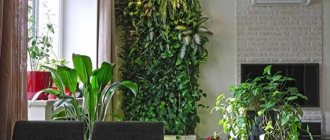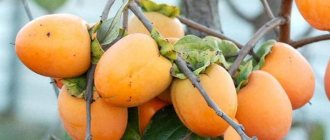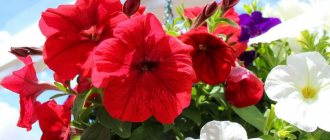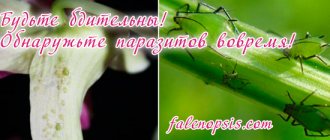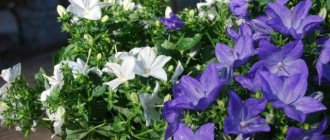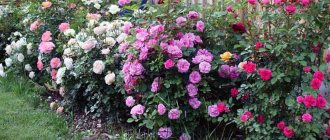What is the name of an indoor flower with red flowers?
Beginning flower growers often look for the answer to the question “what is the name of a home flower with red flowers” on the Internet or special encyclopedias. And in response to this request, the search engine produces a huge number of assumptions.
Bromeliads in the interior
The most popular among them are the following:
- Jameson's red gerbera;
- red pelargonium;
- oleander;
- pomegranate, which is distinguished not only by its spectacular flowering period, but also by equally interesting fruits;
- pentas.
But these are not all red indoor flowers - there are others. Each time dictates its own fashion trends. And over the past few years, the leading positions in the ranking of red indoor flowers are occupied by those described below.
Buying poinsettias
It is very important to be responsible when purchasing poinsettias. Specimens that go on sale are not always transported in conditions that are comfortable for the plant.
Therefore, you should not hope that the period of adaptation to room conditions will be easy.
When choosing a plant, first of all you should pay attention to the soil, which should not be too waterlogged.
At home, it must be placed on a bright windowsill, always without drafts. The temperature in the room during the acclimatization period should be at least 16 degrees. Poinsettia gets used to home conditions in about 3 weeks. After about this time, it should be transplanted into universal soil with the addition of a little sand and vermiculite, while not forgetting about drainage. Following these rules will allow you to admire the bright bracts of poinsettia for another 4 months.
It is not recommended to buy poinsettia in the markets in winter, as there is a risk of getting a plant with frozen roots.
Anthurium - indoor plant with red flowers
What is the name of an indoor flower with red leaves?
Anthurium looks very impressive. It came to Russia from South America. It belongs to the aroid family, hence its unusual shape. Anthurium is fastidious in care and requires an individual approach. It loves good drainage, warm air (especially in summer) and high humidity.
Interesting! People often call it “Men’s Happiness”, therefore it is recommended to single women to attract the attention of men and gain family well-being.
It reaches its maximum level of energy activity if it was given as a gift and not purchased independently.
Blooming anthurium
Anthurium
Anthurium
- Anthurium inflorescences are green, burgundy, purple, and white. Bracts can also be of different colors, even black. Leaves of different shapes: round, spatulate, heart-shaped.
- Anthurium is a fastidious flower and requires a certain amount of care.
- Lighting . Loves partial shade or brightly diffused light. In the shade the plant may not bloom.
- The temperature in summer should be 20-25°C. In winter – 16-18°C. Doesn't like drafts.
- For watering , use warm water (once every 7 days). Does not tolerate stagnant water and dry soil.
- Anthurium prefers a humid environment . Therefore, regular spraying is necessary. Sphagnum moss is used to retain soil moisture.
- Alternate organic matter with mineral fertilizers (once every 7 days).
- Young specimens are replanted annually, adults once every 2-3 years. Choose flowerpots that are wide and shallow.
- The soil . The mixture is prepared from charcoal, moss, cones, broken brick, sand, peat, leaf soil and humus.
- Propagated by side shoots, cuttings, and seeds.
- Anthurium can be affected by pests: aphids, scale insects, thrips . The most dangerous disease is anthracnose.
Hippeastrum - indoor plant with red flowers
What is the name of an indoor flower with long narrow leaves?
Hipperastrum belongs to the genus Amaryllidaceae, so its second name is Amaryllis, which is not entirely correct.
The flowering period is short, from August to September, but the flowering is spectacular. At this time, a long, up to 80 cm, strong peduncle-arrow is produced, on which is located a large flower, up to 20 cm in diameter. Its color depends on the type, so you need to pay attention to this when purchasing.
Hipperastrum is undemanding; its main wish is the presence of bright, diffused sunlight.
Hipperastrum
Rules for watering and fertilizing
Caring for Guzmania at home means maintaining an optimal microclimate and proper watering. The main recommendations here are:
- a small amount of water is poured directly into the outlet, and the remaining water is removed after a few minutes;
- water the soil rarely - only if it is very dry;
- In winter, 1-2 waterings per week are sufficient, and in summer, daily watering is required;
- overwatering is more dangerous for Guzmania than overdrying;
- For spraying, use only clean water, and to remove dust, the leaves are occasionally wiped with a cotton swab.
The magnificent Donella-Smith.
When Guzmania blooms, it needs mineral supplements . It is worth buying a special complex for bromeliads that dissolves in water. Fertilizers in the form of a solution are also applied to the outlet. The frequency of feeding is once a month.
Interesting! If Guzmania is in favorable conditions, but does not bloom, then place apple slices in a bag on the ground (just make sure that they do not become moldy over time). The fruit will release ethylene and the plant will bloom very quickly.
Azalea - red house flowers
What is the name of an indoor love flower that brings happiness to the house?
Azalea is a lush flowering houseplant with large red flowers (but shades may vary).
Only adult specimens that are at least 3 years old bloom. It blooms either in winter or (less often) in February-March.
However, it may happen that flowering does not occur at all. This comes from the fact that azalea is a very capricious inhabitant of window sills.
The flower needs: high levels of air and soil humidity, low temperature, good drainage, light shading. All conditions are mandatory.
Azalea
Hippeastrum
Hippeastrum
The plant is bulbous . Blooms twice in one year. The inflorescences are large and of various colors. The peduncle is hollow, with 7 flowers.- Lighting . Grows well in direct sunlight and diffused light.
- Temperature in summer is 23-25°C. In winter – 13°C.
- Soil : river sand, peat, turf soil 1:1:1.
- During the period of active growth, mineral fertilizers are applied (once every 3 weeks). In winter, fertilizing is excluded.
- Watering should be moderate. Does not tolerate waterlogging. During the dormant period, the plant is not watered.
- Propagated by daughter bulbs, dividing the bulb, and seeds.
- Watering stops in the second ten days of September . As soon as the leaves are dry, the pot is sent to a dark place. Storage temperature 13°C and a room with low humidity. The flower must be awakened in February. To do this, move it to a bright place and water and feed it.
- Replanting is done to enlarge the flowerpot and replace the soil (once every 3 years).
Clivia cinnabar - red indoor flowers
Clivia is another member of the Amaryllis family. This is a perennial whose long leaves are collected in a rosette.
The flowers are bell-shaped and located on a high stem in inflorescences (10-20 pieces in one). The color can be yellow, orange, reddish.
Mature plants bloom twice a year with proper care. But clivia is not demanding - even beginners can cope with its cultivation.
Attention! Most often, it is Clivia cinnabar that is grown, which looks the most presentable and is easy to care for.
Cryptanthus
Cryptanthus is another striking representative of the Bromeliad family. The color of the leaves will appeal to lovers of unusual color combinations. The pattern also looks interesting.
The nuances of growing cryptanthus:
- Temperature: in summer 21-24 degrees, in winter 18-20, without drafts.
- Lighting: loves sunny, bright areas in the house, but without direct sunlight, very light partial shade is allowed.
- Watering: in spring and summer it is necessary to constantly maintain moderate soil moisture. It is important to avoid excess and lack of moisture. The main thing is stability, without sudden changes. In cold weather, the procedure is performed much less frequently; after the top layer of soil has dried, moisture should be added the next day. Water at the root, do not bring water into the outlet.
- Humidity: Cryptanthus needs high air humidity, which must be maintained constantly. An air humidifier or spraying several times every day will help.
- Pests: spider mites, thrips.
- Reproduction: by lateral shoots.
Dipladenia - indoor flowers with red flowers
Dipladenia is quite rare in the collections of domestic flower growers.
It has a number of features:
- the second name is mandevilla;
- can be grown both at home and in open ground;
- two forms - a bush and a liana, the stems of which reach 4 m;
- flowering - June-August;
- on one stem of an adult plant there can be up to 50 small flowers with a pleasant aroma;
- It begins to bloom from the first year of life.
Most likely, dipladenia will soon spread and gain popularity, but for now, every lover of unusual flowers can be among the first.
Description of the variety
Sometimes you can hear that nurseries offer spathiphyllums with red or pink bracts. However, before you succumb to a tempting offer and rush to purchase a rare flower, it is worth understanding the classification. The white cover of a flower can only become colored under the influence of chemicals artificially introduced from the peduncle.
Important! Under natural conditions, the bract can only turn green.
And yet there are plants that are closely related to spathiphyllum and have colored perianth. These are anthuriums well known to gardeners. Thanks to breeders, depending on the variety, they are able to please the owner with scarlet, burgundy, pink and almost white covers of inflorescences. Spathiphyllum and anthurium have many common morphological features. Therefore, in the West, the common name is applied to plants - peace lily.
Spathiphyllum, like many plants living in tropical and subtropical zones, does not shed its leaves all year round, remaining green and attractive. The leaves of the plant are quite large, elongated-lanceolate, with depressed veins and a glossy surface.
Since spathiphyllum has practically no stem, or it is very shortened and spreads along the ground, the leaves rise directly from the ground. And during the flowering period, graceful peduncles with white bracts surrounding a white or yellowish cob rise above the plants. Contrary to popular belief, the photo shows not a spathiphyllum flower, but its inflorescence. But small flowers collected in a cob have neither petals nor external attractiveness.
Columnea - homemade red flower
Columnea is unusual in appearance and has its own characteristic features:
- leaves are small, smooth, of different shapes;
- growth forms: ampelous and semi-ampelous;
- the stems are covered with small fibers;
- direct relatives: Saintpaulia, Koleria, Streptocarpus;
- There are more than 400 species in nature, but only 30 of them are domesticated.
Columnea can be bright yellow, orange, spotted.
Attention! The main varieties with red flowers: Krakatoa, Blood Red, Sharp, Small-leaved.
What does anthurium bring to the family?
Anthurium has positive energy. It’s worth buying it for a girl if she doesn’t have good relationships with men. And in a family home, a flower will create an atmosphere of stability and harmony in relationships, and in order to enhance this beneficial effect, you need to get a spathiphyllum: it is considered a female flower.
And if there are financial problems in the family, you need to purchase several anthuriums at once and carefully care for them. Healthy large flowers will attract money into the house.
There is a legend associated with this flower. The cruel leader decided to marry a girl from a neighboring tribe. The beauty refused him, so he enslaved her tribe and forced her to marry him.
When the traditional wedding bonfire was lit in the evening, the girl threw herself into it out of despair. But the gods took pity on the unfortunate woman and turned her into a red anthurium.
The color red has always been associated with love, passion and life. This is why red flowers are usually placed in the bedroom.
But this does not mean at all that it will not get along in other rooms. Red flowers will look great on the windowsill in the living room, office or nursery.
The most striking examples of this type of indoor plants are hibiscus, pentas, oleander, leia, pomegranate, spurge, walloth and gerbera.
Hibiscus
Hibiscus is a spectacular flowering plant that loves sunny windowsills.
The large flowers are short-lived, sometimes blooming for only one day, but are regular from spring to autumn.
This house flower requires systematic pruning - trim the stems at the end of winter to create tillering.
An unpruned bush can reach one and a half meters or more. It can be made into a standard form.
Pentas
Pentas are grown in a sunny window. The tips of the shoots must be systematically pinched so that the bush does not become leggy.
The height of the plant should be maintained within 45 cm. These red flowers bloom infrequently - buds can appear at any time, and the most traditional time is winter.
Pentas are easy to raise. Pentas lanceolate, or meat-red, is the main variety.
The inflorescence consists of numerous star-shaped tubular flowers; There are varieties in pink, white, red and purple colors.
Oleander
Oleander is grown in large rooms or a winter garden. In summer, fragrant red flowers bloom in inflorescences.
In the fall, those shoots that bloomed need to be pruned. Oleander sap and wood are poisonous.
The leaves of this species are very similar to willow leaves.
Common oleander - can look compact in a garden center.
However, this red flower can eventually become a spreading bush about 2 meters high.
There are varieties with pink, white, red and yellow flowers.
Lei
Leia is a shrubby plant with large leaves, each of them is divided into many leaves with a sharp shape.
The foliage is bronze-red when young, but usually turns green when mature.
One species that is grown as a houseplant is the bright red leia.
Pomegranate
An ordinary pomegranate is not suitable for the living room, but the dwarf variety is an excellent option for a sunny window.
The flowers may become bright orange fruits, but will not fully ripen.
Beautiful spurge
Euphorbia spurge or poinsettia is a compact, beautiful and unpretentious plant with red flowers.
The most famous are red, but there are also white and pink.
The most unusual type of this red flower has cream bracts with pink centers.
Vallota
Vallota is perfect for a sunny windowsill.
These red houseplants have evergreen leaves and flowers 30-55 cm tall.
There are also varieties with salmon and white flowers.
Gerberas
Gerbera Jameson blooms from May to August. Its inflorescences are double and simple.
The color of the inflorescences can be orange, yellow, red, white with a central disk of yellow and pink. But the most famous are red gerberas.
Gerbera Jameson Happipot is a small variety - flower stalks with a height of 25-30 cm.
The video has been deleted.
| Video (click to play). |
- Gams Eduard Sergeevich Modern Trends in the Development of Research in the Field of Creation of New Generation Herbicides and Genetic Plant Protection (Review of Foreign Literature) / Agricultural Biology. Series “Plant Biology”, 1995, No. 1, Page. 12 - 18.; AST, AST Moscow, Agata - Moscow, 2012. - 616 p.
- Keller B. A. Botany; State publishing house of collective farm and state farm literature - Moscow, 1977. - 472 p.
- Marinova, K.V. Testing knowledge in biology: Section Man and his health. 8th grade / K.V. Marinova. - M.: Vlados, 2004. - 765 p.
Beautiful spurge - home flower with red flowers
The beautiful Euphorbia is better known as Poinsettia or Christmas star. This is a very popular species, sold everywhere in winter, before the New Year and Christmas. It appeared in Russia not so long ago, but quickly found its target audience.
Important! The most beautiful milkweed blooms when the daylight hours begin to shorten. For full flowering it needs at least 15 hours of darkness.
Despite the popular belief that it is an annual, beautiful spurge grows for many years, since it belongs to the genus of succulents. In the summer it needs normal, diffused lighting, and from September the number of dark hours should be reduced to 12. Then there is no doubt that the poinsettia will bloom and delight with its inflorescences for many years.
Interesting! In nature, the height of the Christmas star bush can reach 4 m, and domestic species are short, no more than 50 cm.
Overview of species
An indoor flower with red leaves can look advantageous in various interiors: in Nordic snow-white, cheerful boho, and retro-style rooms. It becomes an excellent background for other plants that are neutral in color (if, of course, it gets along with them regarding other characteristics). Flowers with reddish leaves at the top surprise and make the interior dynamic, flowers with red-green veins look exotic, and these solutions really change the appearance of the room.
Poinsettia
True, in the post-Soviet space this plant is more commonly known as “Christmas star ”. It blooms inconspicuously and small, and acquires decorative qualities due to the apical leaves - they are bright red. The lower part of the poinsettia is dark green. This contrast is what makes the flower attractive.
Poinsettias can be found in the wild in Mexico and Central America. The houseplant is either an annual or a biennial. The red leaves of the flower are called inflorescences - this is modified foliage. The bracts can last from 2 to 6 months on the stem. And if you buy a flower, take one whose buds have not yet bloomed.
Poinsettia does not tolerate drafts and low temperatures, nor does it tolerate direct rays of the sun. It needs watering as the substrate dries out. In order for a beautiful flower to bloom exactly in time for Christmas, you need to prepare it for this in September.
The time of night is artificially extended to 15 hours - simply cover the plant with dense material (but maintaining air access).
Lighting for poinsettias
From the end of September, poinsettia must be completely isolated from night light (from moonlight to artificial) for 2 months. The flower must be in complete darkness for 14 hours.
A cardboard box or dark bag that can be placed on top of the poinsettia pot is perfect for this. Thanks to the darkness, the coloring of the bracts will begin.
They are often called flowers, but this is not so. Poinsettia flowers are small and inconspicuous, and it is the upper leaves that become colorful.
Feeding poinsettia
The first feeding of poinsettia can be done 3 weeks after transplantation. Throughout the summer, the flower grows rapidly.
Poinsettia needs to be fed 2 - 3 times a month with complex mineral fertilizer or organic fertilizer alternately.
During flowering, the Christmas star will be more suitable for potassium fertilizers for flowering plants. Christmas star poinsettia care
How to prune poinsettia
Poinsettias need to be replanted every year in the spring, from mid-April to mid-May. Around March, the stem part of the plant must be cut back by a third. Thus, from three to five of the most developed and strong buds remain on each stem.
After pruning, the decorative perennial should be placed on a south window, in a warm room. Trimmed shoots can be used as planting cuttings for propagation. If necessary, it is possible to shorten the shoots a little again, which will allow you to obtain a more magnificent aerial part.
Watering poinsettias
The star is sensitive to a lack of moisture, but an excess will also cause harm. Watering is average, do not allow moisture to accumulate.
When the soil dries out a little, you can water it again. Golden rule: it’s better more often than once and all at once.
A couple of times a day a little will be enough. In January - March, reduce watering to a minimum.
Be sure to water the poinsettia with water at room temperature; cold temperatures will cause the plant to shed its leaves. It is good to spray the leaves with a spray bottle.
Temperature for poinsettia
The optimal temperature for this miracle at home is +20 +22 degrees; temperatures should not be allowed below 15 degrees - the bracts will lose their richness in color, and at lower temperatures the roots will begin to die.
Air humidity: 60 - 70%. The plant does not tolerate drafts.
Preventive actions
In order to detect the problem in a timely manner, you need to regularly inspect the decorative perennial for damage by diseases or pests:
- in case of mealybug infestation, repeated watering and spraying with a decoction based on cyclamen tubers is carried out, and in case of massive infestation, “Aktara”, “Calypso”, “Mospilan”, “Fitoverm”, “Confidant”, “Biotlin”, or “Aktellik” are used three times;
- in case of spider mite infestation, a soap-alcohol solution is applied to the foliage, followed by a shower, and in case of massive infestation, spraying with acaricidal agents in the form of “Antikilesch”, “Agravertin”, “Aktofit”, “Neoron”, “Vermitek”, “Apollo” and "Sunmaita";
- in case of whitefly infection, treatment is carried out with the preparations “Iskra-Double Effect”, “Tanrek”, “Admiral”, “Aktara”, “Aktellik”, “Fury”, “Fufanon” or “Decis”;
- somewhat less frequently, poinsettia is affected by thrips. In this case, herbal solutions or chemical preparations “Fitoverm”, “Spintor”, “Inta-Vir”, “Karate”, “Apache”, “Dantop” or “Gaupsin” are used.
The main diseases affecting the New Year's Flower are gray rot and fusarium. In the first case, treatment is carried out with Bordeaux mixture, copper sulfate, “HOM”, “Kuprozan”, “Skor”, “Oleocuprite” and “Oxychom”. With fusarium, watering with “Maxim”, “Vitar”, “Previkur” and “Alirin-B” helps well.
Irezine
The plant is a perennial and belongs to the amaranth family. Most often found in apartments is the Herbst variety, which has ellipsoidal leaves colored red and burgundy. There are species with dark green foliage, where each leaf is covered with crimson-colored veins. The flower is not whimsical, it likes diffused light, and the temperature regime is indifferent. The flower is resistant to pests and tolerates dryness in the apartment during the heating season and even drought.
Hypestes
This shrub belongs to the Acanthaceae family. Its main highlight is the contrast between the greenness of the leaf and the abundance of red-pink spots on its surface. And the expressiveness of the color of these spots depends on the characteristics of care.
Main rules of care:
- light fertile soil;
- shallow, but sufficiently wide flowerpot;
- abundant watering, frequent spraying;
- moderately warm, bright room;
- deep pruning in March.
If the hyposthes does not bloom, do not be especially upset. Its beauty lies in its leaves, and its flowers are small and inconspicuous. In addition, after flowering it ages quickly.
Splash
Hypestes Splash is an exotic compact plant, the height of the stems ranges from 20 to 30 cm. The stems are erect, rigid, and begin to curl from the very base. The leaves are lanceolate and shiny. Their main color is all shades of burgundy and pink, the green color appears only near large veins . To maintain brightness and saturation, you need to take care of a sufficient amount of nutrients, sunlight, and moisture. Regular pruning allows you to form a lush, beautiful crown.
Sanguinolenta
It is not for nothing that this indoor plant with variegated leaves received the name blood-red flower; it has reddish stems, rich red spots on dark green leaves. The shrub grows 30-50 cm in height. Opposing plates are medium in size, up to 8 cm in length, oval, with a pointed end, wavy edges. The veins are also purple.
The core of the flower is white, the corolla is dark pink. Small, inconspicuous flowers are collected in inflorescences in the form of umbrellas or heads, the bracts are fused, resembling a bedspread. Flowering continues from early June to late December.
Royal begonia
It is important for this plant to create an environment that recreates the climate of the red-leaved begonia’s homeland - India. The leaves of the flower are broadly oval, asymmetrical, and have a heart-shaped base.
Conditions of care:
- temperature indicators from spring to autumn are +20... 25°C, but in prolonged heat the begonia can die, in winter - not lower than +15°C;
- bright large colors require a lot of light, and more specifically, muted, diffused rays;
- the soil in the flowerpot should be slightly damp;
- the flower is afraid of changes from excessive watering to drought;
- the begonia pot needs to be low, but quite wide;
- from November to the first month of spring, the beautiful plant requires less attention; its dormant period begins.
Do not divide the bush. If it grows excessively, it should be transferred to a large flowerpot and transshipped. Red-leaved begonia grows in one pot for 3 years or a little less.
Columnea
Columnaea is an evergreen plant native to the American rainforests. It is distinguished by a high level of thermophilicity, so it is only suitable for growing at home. The appearance is quite unusual, the columna resembles a subshrub with small leaves and rather long, hanging shoots.
Care also has a number of nuances, which are discussed in detail below:
- To grow columnea, it is best to use hanging pots or vases. This is due to the fact that in the wild the plant prefers to grow on the crowns of trees.
- The column requires a large amount of light, but it must be diffused. For this reason, the plant is usually placed in the middle of the window, allowing light to fall from all sides.
- The pot should be placed on the western or eastern side , since in the north the plant will lack natural light, and in the south there is a risk of burns.
- In autumn and winter, there is usually a lack of sunlight , so it will be necessary to install additional sources of artificial lighting; without them, the Columna will not bloom.
- The optimal temperature range is +20 – +27°C, but with very high humidity levels it can be increased to +23 – +30°C. In late autumn or winter, the temperature can be lowered to +15 – +17°C, but it will be necessary to exclude the presence of drafts that can destroy the flower.
- Columnia needs high humidity, so frequent spraying from a spray bottle will be required; the water used should be at room temperature or a little warmer. During this procedure, it is necessary to ensure that moisture does not get on the inflorescences, as this will lead to their rotting. A good solution would be to place the columnea in a hanging pot above the aquarium, which will provide it with consistently high humidity.
- Water used for irrigation should sit for a day or longer and be at room temperature. The frequency is moderate; the soil should be moistened only after it has noticeably dried out. In summer, the frequency can be increased, but the most important thing is to maintain balance, since deviation in any direction can lead to the death of the plant.
Irezine
Iresine
This representative of the Amaranthaceae family is easily recognizable by its red color of various shades.
Like all amaranths, it has clearly defined veins.
Irezine cannot tolerate the absence of light, but in the hottest hours of the summer you need to make sure that the leaf plates do not overheat.
The plant should be watered as the soil dries out. Spraying will not be superfluous.
Cordyline - indoor decorative flower with long red leaves
Cordyline fruticosa
This is an indoor flower with long red leaves up to 50 cm in length with red or red and white stripes. Cordyline australis has dense green leaves without petioles, some varieties with reddish or white stripes. In both species, the leaves gradually dry out from below - this is how trunks are formed.
Family: Agavaceae (Agave).
Homeland: India, New Zealand.
Location: This ornamental flower with red leaves likes light without direct sun, Cordyline australis prefers full sun.
Temperature: for Cordyline fruticosa - warm, Cordyline australis - cool.
Air humidity: ensure high humidity, spray more often.
Substrate: flower soil mixture; for Cordyline australis - from 13 sand.
Watering: Cordyline fruticosa - the soil should never dry out.
Feeding: once every 3 weeks, do not feed Cordyline australis in winter.
Transplantation: if necessary.
Reproduction: seeds, apical and stem cuttings.
Pests, diseases: red mite.
Important! Place Cordyline australis outside in partial shade in summer.
Maranta
Maranta
A perennial plant with variegated lanceolate or oval leaves. The shoots are straight, but in case of strong growth they descend to the ground. The flowers are inconspicuous and small.
Belongs to the Marantaceae family. Prefers moderate temperatures and high humidity.
More useful information can be found in the article “How to care for Maranta: basic rules for care at home.”
Neoregelia
A popular houseplant with colorful leaves is Neoregelia. The flower got its name in honor of the botanist Regel. Externally, it is a tightly assembled rosette of thin leaves. The width is about 5 cm, the height is up to 30-40 cm.
Flower with red leaves
Important! The flower does not always have a constant color. During the dormant period, the core of the rosette is green. Before flowering, the middle of the flower acquires a bright color: from scarlet to pink.
Neorgelia is an epiphytic flower and under natural conditions can grow on different surfaces: both in the soil and on a tree trunk. Therefore, homemade nonorgelias are often grown using the hydroponics method, that is, in a water composition without planting in the soil.
Neoregelia
Croton
Croton is another plant from the spurge family; many professional gardeners recognize it as one of the most attractive decorative foliage flowers. The main advantage can be called a worthy decoration of virtually any interior without the need to allocate significant space for it.
All the features of caring for croton are discussed below:
- The plant responds positively to bright light, but is very sensitive to an excess of sunlight , so in summer it is best placed on the north side, and in winter it is moved to the south. This will allow him to sunbathe exclusively in the morning and evening hours.
- The optimal temperature in summer is +20 – +22°C, and in winter at least +16°C.
- Watering must be done regularly so that the soil is always moist , but excess moisture must also be avoided, otherwise there is a risk of rotting of the root system.
- Ambient humidity is very important for croton; it grows poorly in rooms with dry air. To create the most comfortable conditions, it is recommended to spray daily from a spray bottle.
- Special requirements are imposed on the water that will be used for irrigation: it must be warm enough, it must first be subjected to a filtration procedure or settled, which will help get rid of a number of harmful impurities.
- In the summer, the croton needs to take a warm shower every month , but during this procedure it is necessary to ensure that water does not flow inside the pot, as this will lead to waterlogging of the soil.
- For fertilizing, a complex solution of various mineral fertilizers is used, which are applied only to pre-moistened soil. From mid-spring to late autumn, the procedure is carried out twice a month; in winter, it can be reduced to 1 feeding every month.
- As they grow, mature plants must be pruned so that they form a beautiful crown of the correct shape. All sections must be treated with sulfur powder or a charcoal mixture. This is necessary for faster healing of wounds and minimizing the risk of infection.
- Young plants are not pruned, but they must be pinched. You can start doing this from the moment the croton grows to 15 cm in height.
- If flowering does not represent any decorative value , then all young buds should be cut off in a timely manner, since this process takes a significant amount of energy from the croton.
Guzmania
Guzmania has a brightly colored inflorescence - the part that frames the inflorescence. The inflorescence is at least 5 cm long. The dense leaves of guzmania form a neat rosette. The color of the leaves below is bright green. The top of the plant (inflorescence) is brightly colored. The inflorescence can be red, yellow, or orange. The flowers themselves are light and inconspicuous. Flowering lasts up to 3 months.
Note! The root system of guzmania is poorly developed, so it is better not to add hard substrate and stones to the soil.
Guzmania also requires periodic feeding with mineral fertilizers.
Guzmania
Coleus
Coleus is a miniature bush that is covered on all sides with leaves that give it some resemblance to nettles. The main feature is the variety of appearance: this plant can have a wide variety of patterns and color combinations.
Coleus also grows quite quickly if you provide it with proper care:
- Coleus needs a lot of light . When growing this plant in the middle zone, you don’t even have to worry about prolonged exposure to direct sunlight, since it will not cause serious burns.
- In summer, frequent and abundant watering is required; the soil should always be moist. In winter, the frequency of this procedure must be reduced, since the root system does not tolerate stagnant water at low temperatures.
- In winter, coleus can be kept in cool places , but the air temperature should not fall below +12 – +16°C.
- During hot summer periods, the plant must be provided with access to fresh air , as well as regularly sprayed with a spray bottle.
- In spring and summer, monthly feeding is carried out; nitrogen organic fertilizers are used for these purposes. It is not recommended to use products with a high content of phosphorus or potassium, since they are intended primarily to stimulate the flowering process, and coleus flowers usually do not have any decorative value. You can also use all universal complex fertilizers intended for all types of decorative deciduous plants.
Nidularium
Belongs to the bromeliad family. Its homeland is the tropical region of America. A distinctive feature is the absence of a stem. Elongated red leaves with jagged edges are formed during the flowering period. As soon as the nidularium fades, the wonderful rosette disappears, and in its place, children are formed on the sides, which soon begin to bloom, due to which the plant quickly increases in volume. The flower must be protected from direct sun, make sure that the soil in the pot and the atmosphere in the room are sufficiently moist.
Oxalis triangularis
This flower has no stems and belongs to the oxalis family. Also known as “rabbit cabbage”. Red-violet leaves with carved edges are located on elongated petioles, which rise in the morning and fall in the evening. The white flowers of the plant are lonely and unsightly. Because of its leaves, which resemble butterflies collecting nectar, the flower has another name: “Madama Butterfly”. The foliage can be eaten. When growing wood sorrel at home, the container with it must be placed in a bright place, otherwise the foliage will darken and its color will approach green. It is necessary to moisten the soil as it dries. The plant is fed in spring and summer using liquid fertilizers.
Cordilina
An interesting plant with long leaves that can grow up to half a meter in length. The leaves will be red or red-white. It grows naturally in India and New Zealand.
Cordyline care:
- does not tolerate direct light;
- wants to grow in warmth;
- requires high humidity, frequent spraying;
- She needs feeding once every 3-3.5 weeks;
- afraid of red ticks.
Interestingly, this acquisition belongs to the asparagus family. In the interior it can look very bright: the larger the plant, the more attention it receives. Flowers don’t feel very comfortable in small spaces.
Hibiscus - varieties with red flowers
Hibiscus has been known for decades under the name Chinese rose. Presented in herbaceous, shrub and tree forms. There are more than 250 species in total. The coloring can be very different.
Popular red-flowering varieties are presented below:
- Chinese;
- variegated;
- Sudanese rose.
Interesting! In Indonesia, Hawaii and Sri Lanka, hibiscus is endowed with magical properties, used as medicine and as a seasoning.
Any representative of the flora with bright red flowers will become a real decoration of your home interior. If you do not yet have sufficient experience in floriculture, then you can choose unpretentious options. Original flowers against the background of lush green leaves will not leave anyone indifferent.
Spathiphyllum diseases and their treatment
Spider mites are one of the most dangerous pests, which, as a rule, appear on foliage (on the lower part). It processes the leaves with its web. Soon the leaves begin to dry. It is necessary to immediately act on the mite, since delay and initiation of the disease is dangerous for the plant. The first thing to do is wash the plant with soapy water and remove all the cobwebs first. More radical measures - insecticides, ground sulfur. After treatment, be sure to wash the flower with just warm water.
Some gardeners give this recipe for spider mites: pour 100 grams of onion peel with five liters of water and leave for several days (at least five).
- Aphid. Aphids also settle on the lower parts of leaves. She feeds on the juice of the flower. As a result, the leaves dry out and curl. Aphids can be black, green or gray. A huge disadvantage is that it multiplies very quickly. Therefore, measures to combat it must be taken immediately. To do this, you need to treat the plant with nicotine sulfate. The ratio is: one gram of product per liter of water. A soap solution is also used to fight. During the procedure, the soil in the pot can be covered with plastic wrap. It is not always possible to destroy aphids the first time, so the treatment can be repeated if necessary.
- Shield. The young scale insect is practically invisible, but it reproduces quickly. The disease can be recognized by dark spots on the leaves and stems of the flower. This is precisely what defeat consists of. You can get rid of scale insects using a soap and tobacco solution. You need to wipe the affected areas of the plant with it. Kerosene is also added to the solution. After this treatment, you need to wash the plant with soapy water and insecticides.
- Mealybug . Spathiphyllum is often affected by mealybugs. It appears from excessive dampness and hides between the leaves. Therefore, you need to regularly inspect the plant. If there are not too many insects, then simply soak a cloth in alcohol and remove them. In case of total infection, you need to treat the plant with Actellik. Some gardeners use an infusion of citrus peels to combat scale insects. However, insecticides help better than other means. If the action of insecticides is not effective, then their concentration needs to be increased.

